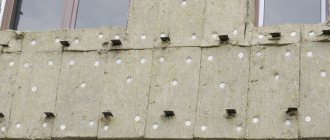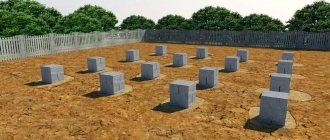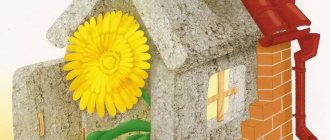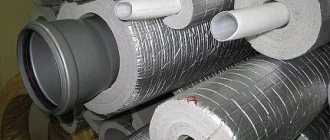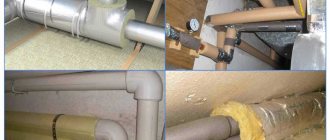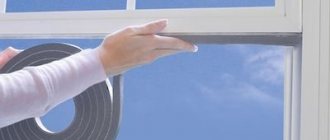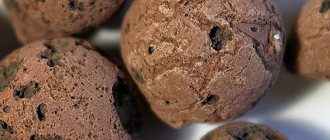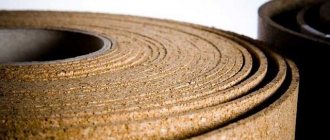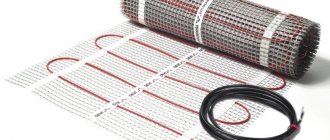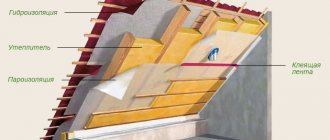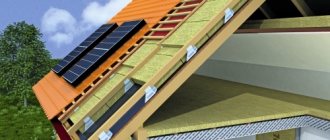In order not to freeze at home in winter, and to save costs on additional heating devices, you need to take care of insulating the room. Spray insulation is now gaining popularity.
It appeared back in 1937. It's not a new thing abroad for a long time. The active substance is called polyurethane foam. It is sold in large canisters and cylinders. It is obtained by mixing a polyol and a polyisocyanate. They react to form a significant amount of foam.
Apply to the surface by spraying. Has a bubbly texture. After drying it hardens. 80% consists of air. The insulation thickness of 5 cm is comparable in its characteristics to a 35 cm expanded clay layer.
Pros and cons of sprayed insulation
Any insulation material has its advantages and disadvantages. It is important to familiarize yourself with them before starting work. This will allow you to make the right choice and avoid unpleasant situations.
Positive characteristics:
- harmless to humans - the composition does not contain hazardous substances;
- penetration into hard-to-reach places - every small crack will be filled;
- low thermal conductivity - the room temperature will not decrease;
- absence of joints - forms a single canvas;
- excellent sound insulation - no more noise;
- resistance to temperature fluctuations - will not collapse under the influence of atmospheric phenomena;
- durability of the material – will last 30–50 years;
- reliable adhesion to surfaces - firmly attached to any objects;
- water-repellent properties - it is not afraid of moisture;
- versatility of use - used almost everywhere;
- ease of application - even a beginner can handle it;
- resistance to fungi, mold, pests, chemicals;
- light weight – almost weightless;
- resistant to ignition - stops burning without a fire source.
Figure 1. The insulation does not leave “cold bridges”.
Many problems are solved that other types of insulation cannot cope with.
But there are disadvantages:
- possibility of deformation of the spraying surface - preliminary leveling will be required;
- poor tolerance to exposure to sunlight - it is worth protecting it from them, otherwise a gradual loss of beneficial qualities occurs;
- the need to use additional equipment - a bulky unit will be required;
- work in a protective suit - vapors generated during work should not enter the lungs;
- vapor permeability of the finished coating - there will be a need to ventilate the room;
- high price - high cost compared to other types of insulation.
The presented type of thermal protection contains a small number of unpleasant moments. But you shouldn't ignore them. When choosing an insulation method, you need to carefully study them and draw the appropriate conclusions.
HOW OLD IS POLYURETHANE FOAM?
In 1937 in Germany, Otto Georg Wilhelm Bayer (1902-1982) formulated and patented polyurethane foam. He was able to synthesize polyurethane foam by exploring his basic idea that mixing small volumes of chemicals could create dry foam materials. Therefore, polyurethane foam is already more than 80 years old. Of course, it was just invented in 1937 and the product was refined for several years until it reached a stable state. But still, 80 years is a long time to work out all the recipe options to perfection.
Polyurethane has been developed for a variety of applications ranging from shoe soles and cushions to industrial use. In the 1940s, rigid foam was used in aircraft construction, and in 1979, polyurethane began to be used as building insulation. It is worth noting that all this happened in Europe and America. In Russia, the use of polyurethane foam and related polymer products began much later. And now its use is just beginning to gain momentum. This is especially noticeable in the construction industry, where its development is hampered by a weak regulatory framework and the stubbornness of conservative customers and designers.
Types of insulation for spraying
This is a universal material. It has two completely different types:
- Lightweight (open - cellular structure). Reminds me of cotton wool. It produces foam rubber. Has excellent elasticity. Soft. During operation, there is less material consumption than with rigid material. Provides better sound insulation compared to its rigid form, but the ability to absorb liquid is higher. Therefore it is suitable for internal insulation. Used in the creation of decorative elements. Its use requires adequate ventilation. Density 8–20 kg/m3.
- Hard (closed - cellular structure). Sufficiently dense material - from 25–300 kg/m3. Similar to foam. The price is higher than the light type. Suitable for outdoor use. Excellent insulation of the foundation. Ideally protects the walls of the bathhouse - vapor barrier is almost zero. Has a positive rating when working with a roof.
The use of any type depends on the tasks being solved and the conditions of use. All of them will retain their qualities for 25 years.
There is a classification by components:
- one-component - to acquire hardness you will need humidity from the air and building materials. Can be used outdoors and with sufficient ventilation;
- two-component - hardens due to a reaction between substances. Can be used in rooms without access to fresh air.
There are several types of sprayed PU - difficult to burn and poorly flammable. The fire safety class is indicated on the packaging.
How to choose the right product
Which company is better to buy a product depends on personal preferences. You can first study the ratings of quality products, user reviews, product characteristics and functionality, view the new products offered, compare what they cost. However, the following nuances should not be overlooked:
- With noise absorption function. The indicator is greatly influenced by the thickness of the applied layer, the ability to pass air, and elasticity.
- Coefficient of thermal conductivity. It must be optimal.
- Attitude to aggressive substances. Caustic chemical components should not destroy the insulation. Plasticizers, alcohol, acids, gasoline, and all kinds of oils should not harm the product.
- Moisture absorption. The denser the composition, the less liquid it can absorb.
- Flammability index. The manufactured goods are divided into three categories: TS - fire-resistant, S - self-extinguishing, TV - fire-resistant. The special additives or fillers used contribute to increasing fire resistance.
There are several options where to buy the products you need. It is advisable to visit specialized retail outlets, communicate with a professional sales manager, ask him for advice, and ask for a quality certificate for the selected model. You can order goods online in the online store. It will cost a little less, but no one can guarantee that you will receive a quality product. Much depends on the integrity of the supplier.
Popular manufacturers of sprayed polyurethane foam
There are not many manufacturers of sprayed PU - this type of insulation is only gaining momentum. There are 5 most famous ones:
- Polynor – country of origin – Russia. Designed for thermal insulation of rooms, surfaces of various shapes, eliminating the penetration of street noise. Polinor insulation is used to protect windows and balconies from drafts. Used to fill gaps when installing doors. Sold ready-made. All you need is a nozzle. Density 19 – 25 kg/m³. The cost of covering for 2 m2 is 450 rubles. Advantages: convenience, versatility. Disadvantage: high cost;
- Ecotermix are two-component spray systems. Produced in Russia. Available in 220 kg barrels. The price starts from 167 rubles per kg. Available types of insulation with an open-cellular structure. They are intended for interior use only. Density 7–14 kg/m3. There are polyurethane foam sprayers with a closed cell structure. Their density is higher - from 20–25 kg/m3; there are representatives with a density of 40–45 kg/m3. There are types of insulation based on water and freon. The latter are all-season. Suitable for tanks and pipes, providing complete heat and sound insulation. Can be used for outdoor work. 1.5 kg of insulation with a density of 20 m3 per 1 m2 of area is consumed. The advantage is the absence of excess waste. The disadvantage is the large dimensions, the need to mix components, and the need to independently purchase additional equipment;
- Tytan Professional Thermospray – Russian production. Its density is 20–25 kg/m3. Contains 1 component. Used for insulation of garages, basements, private houses. Fills voids and reliably glues surfaces. A can worth 612 rubles is enough for 2 m2. Pistol included. The advantage is ease of application. Disadvantage: it does not stick to polyethylene.
- Teplis – country of origin – Russia. The contents of 1 container cover up to 3m2. Material density 20–25 kg/m3. The price starts from 365 rubles per jar. Designed for sealing rooms, eliminating noise, and patching cracks. The advantage is the absence of a protective suit, the kit includes a rotating spray tube, a more affordable price category. The downside is the fragility of the included device;
- Foam Kit is a company that sells components made in Russia, the USA and other countries. Here you can purchase a ready-made kit to get started. It includes containers with components, gloves, a gun, nozzles, an installation key, and hoses. Everything is packed in a cardboard box with a carrying handle. The density of the resulting material is 28–30 kg/m3. Covered area up to 23 m2. The price of one set is 29,900 rubles. Designed for external and internal work. Able to close holes, insulate walls, and eliminate noise interference. The advantage is the elimination of the search for additional equipment and the low price compared to other brands.
Developers' opinions
“Previously, we often used ecowool for insulation at facilities.
The price at that time was not bad, it was convenient to transport it in compressed form, and when spraying wet, even a respirator was not needed. But now its cost is increasing, and already in terms of money it turns out to be more profitable than mineral wool. So for the last couple of years we haven’t been working with “paper” for insulation.” Oleg, Krasnoyarsk.
“I’ve heard a lot about thermal insulation using spraying, but I’ve never encountered it before. And then I decided to add a loggia to my living space, and urgently needed to insulate it with something. After studying the reviews and characteristics, I realized that I did not need soft foam, but a hard polymer layer - so that it would hardly be pressed through. I settled on Ecothermix, but took insulation intended for external spraying.”
Egor, Nizhny Novgorod.
“I don’t see much point in sprayed thermal insulation based on PPU until it really becomes more cost effective. Where to apply the polymer? It sticks well to smooth brickwork and polystyrene foam, but to pour polyurethane onto wood - then what is the point of building a “clean house”? You can try ecowool, but its disadvantages are again not compensated by financial benefits. Such thermal insulation is only good for non-standard surfaces.”
Alexey, St. Petersburg.
“We were forced to use sprayed polyurethane foam because two walls in our private house were constantly damp. It’s good that the fungus didn’t reach. All the finishing was removed from the facade, slats were filled and everything between them was foamed with polyurethane. For the second year now there has been no dampness in the house, and the wallpaper hasn’t fallen on my head.”
Vera, Moscow.
Summary: Pros and Cons
Prices for thermal insulation of polyurethane foam are indeed one of the highest, plus you will have to pay specialists with equipment to carry out the work. However, there is another problem - craftsmen may refuse to come to a small site, so you will need to look for an alternative method of insulation or try to do it manually.
However, these disadvantages balance the advantages of the insulation spraying technology:
- High adhesion to any building materials.
- Penetration of thermal insulation into all cracks and gaps of structures, regardless of the complexity of their shape.
- Creating a seamless “shell”.
- Excellent noise absorption performance.
Application area
Sprayed polyurethane foam has found its place in almost every area:
- large-scale and individual construction - creation of a heat-insulating and waterproof layer (roofing work, blocking the access of cold air through walls, windows, doors, balconies, basements, bathhouses, foundation);
- prefabricated structures - creation of sandwich panels;
- furniture production - the use of an elastic urethane foam layer (foam rubber) in the creation of mattresses, upholstery, seats;
- freezing units – protection against cold leakage for household and industrial appliances;
- pipeline transport – insulation of pipes for various purposes (petroleum products);
- heating networks – preventing hot water supply from cooling down;
- automotive industry - application in the arrangement of car interiors, creation of bumpers;
- equipment – vibration protection of electrical devices, waterproofing of contact connections;
- aircraft construction – protection against heat loss, noise insulation;
- carriage building – fire-resistant materials, noise reduction, thermal insulation properties;
- transport refrigeration equipment – microclimate support;
- design – creation of decorative products, jewelry, stucco moldings.
This material has conquered the whole world. Its ability to stick to almost any surface, even pipes, has come in handy for many. People sleep on it, sit on it, without knowing it.
Instead of an epilogue
An analysis of the domestic market for modern sprayed insulation materials has revealed that it is largely represented by Russian manufacturers. The reason for this situation is the simple production technology of such substances, as well as the economic inexpediency of importing foreign analogues. Practice shows that Russian samples are in no way inferior to Western and Asian ones, and in most cases they are simply superior to them. Moreover, they are equally suitable for small household and large-scale industrial work. The diversity of this market is also not subject to criticism - there are a great many models and choosing an option for a specific task and at an adequate price is not difficult. However, it is worth mentioning that retail is far from being saturated with industrial-grade compounds that are useful during construction work. In most cases, such compositions are mixed by professionals themselves in order to maintain the required proportions for the final layer.
Stages and technology of the spraying process
All actions to prepare equipment and surfaces are carried out directly at the site of further work.
Important! The insulation does not like wind - work should be carried out in its absence. The day should be without precipitation.
Recommended conditions for application: + 20 C0. Work can be carried out at lower temperatures. But this does not apply to all brands of atomizer. For such purposes, it is worth choosing all-season insulation.
Important! Ordinary stamps simply will not be able to stick to the surface in the cold. As practice shows, in winter there will be more of it. There will be a risk of performing the work poorly.
If you have a lot of work to do, you can’t do it without an assistant. All preparatory activities and the insulation process must be completed in one day. Otherwise, everything will have to be repeated.
Equipment
For the process of spraying insulation, you will need to protect yourself from harmful fumes.
Might be interesting
Vapor barrier
Effective and simple solutions for insulating ceilings in…
Vapor barrier
Technologies and materials for effective thermal insulation of floors in…
Vapor barrier
Vapor barrier and waterproofing, is there a difference?
Vapor barrier
Features of vapor barrier of a wooden building
Important! The process of interaction with sprayed thermal insulation takes place in a protective suit. Glasses and a mask are required. Hands should be protected with silicone gloves. Feet must be covered with rubber boots. Avoid inhalation of substances and contact with skin.
You will need a special installation for mixing substances, a hose and a gun. They can be purchased for rent if this is a one-time process. At the time of mixing materials, the surface must be prepared.
You need to stock up on a product that removes sprayed thermal insulation in advance. It will come in handy when you get into unnecessary places.
Surface preparation
Before carrying out insulation technical measures, you need to perform the following actions:
- the surface must first be cleaned of dirt and dust;
- holes and cracks should be covered with cement - adhesion to the surface will improve, the integrity of the structure will not be at risk;
- the area that does not need to be insulated is covered with polyethylene material;
- Moisten the application surface with water for better adhesion.
After all these steps, you can begin direct spraying.
Application of insulation
The process of applying polyurethane heat protection occurs in several stages:
- the first substance is mixed in the container using a mixer;
- another component is mixed in the second tank - you need to warm up the contents;
- they are combined in the third container;
- the resulting composition is poured into a special unit and sprayed onto the required area using a hose and a gun;
- you should call an assistant to periodically mix the substances;
- first you should go through all the hard-to-reach areas, joints, cracks;
- work is done from the bottom up;
- the output is foam that increases several times;
- each layer is applied after the previous one has dried;
- They dry for about an hour;
- minimum number of coatings – 3;
- protection from UV rays is carried out immediately - plastering, painting, siding.
Spraying polyurethane foam can be done with your own hands if the application area is small. But many difficulties will arise with a large surface. The risk of doing something wrong will increase many times over. Such cases should be entrusted to professionals.
Important! If you have to hire a crew, you should be vigilant. The professional himself will offer to check his work. You will need a nail or a probe (the operator has one). A piece of insulation is cut out anywhere on the finished surface. It must contain at least 3 layers. If they are not there, the spraying technology is broken.
Scope of use
The material in question for insulation, if its composition complies with all safety standards, can be used for finishing both residential and public buildings. With its help it is possible:
- Insulate attic/roof structures of various shapes and types;
- Carry out thermal insulation of floor coverings in public institutions and residential premises;
- Perform insulation of wall ceilings in different buildings.
- Depending on the purpose of the structure, it is possible to propose the following categorization:
- Industrial buildings;
- Outbuildings for various purposes;
- Refrigeration rooms;
- Pipelines;
- Technological tanks and reservoirs for various purposes.
Features of self-application
Most owners of detached housing (and even some large apartments) prefer to apply the composition on their own. However, under certain conditions this process can cause some difficulties. First of all, you need to take care of the availability of special equipment and technical components, namely you will need:
- Isocyanate mixed with freon 134;
- Polyol mixed in a cylinder with freon.
These cylinders must be filled so that their internal pressure is at least eight atmospheres. Upon completion of the preparation of the working surface, spraying is carried out directly, for which the spray gun is delicately activated, while its jet is directed exactly to the right place. Due to the fact that the procedure itself is not particularly complicated, more attention should be paid to the selection of cylinders. Insulation for spraying, enclosed in balloons, is considered more preferable and convenient, because it has properly completed industrial preparation and correctly selected internal pressure in advance.
Application technology
Polyurethane foam is often selected for processing the rafter system from the inside, therefore, it can be used not only at the construction stages, but also after all work in the attic is completed. After hardening, the foam will not only insulate the under-roof space, but also form an effective barrier to absorb noise, while simultaneously strengthening the entire roof structure. The applied heat insulator can also be used to insulate the attic, which traditionally has irregular shapes and joints, and is also characterized by the presence of hard-to-reach places. The entire work process will take several hours, but then you will be able to fully enjoy the comfortable warmth during the cold season, and in the summer the room will be pleasantly cool.
In cases where sprayed heat insulation is used to treat residential premises, it can be applied to both internal and external substrates. Thus, in addition to direct insulation, the treated surfaces will be reliably protected from gusty winds, rainfall, temperature changes and other adverse influences. The material adheres well to horizontal surfaces, for high-quality processing of which you will not need a particularly large layer, so the distance between the ceiling and the floor will not decrease significantly.
The process itself is not too complicated:
- The treated surface is reliably cleaned from dust/dirt and slightly moistened;
- A special nozzle is installed on the cylinder;
- Before the first start-up, the container must be shaken gently, and then the spray nozzle must be directed at the surface to be treated;
- By pressing the trigger of the spray gun, a foam jet is released in the selected direction.
Sprayed insulation in cylinders
It differs from a conventional sprayer - the finished substance is already in a convenient form. You just need to put on a special device (a pistol), and you can perform the necessary actions. The aerosol sprayer should be shaken periodically during application.
Analogue of construction foam. Quite a lot of it is consumed - on average, 1 spray bottle is needed for 2 m2.
Helpful Tips:
- the substance should be sprayed at a distance of 30 cm;
- It is worth adjusting the pressing force when working with sprayed thermal insulation in cylinders - it will be more economical;
- For the ceiling, a special corner attachment will be useful. It is more convenient to use;
- in winter, care must be taken to maintain heat in the container. You can wrap it in woolen cloth. Additionally, wrap the polyurethane foam in the balloons with cellophane;
- There is successful practical experience in using “heat islands” in winter - a movable shelter is built in which the temperature is maintained using heaters.
A protective suit will also be required. All other stages of working with it are exactly the same as with spraying systems.
Conclusion
Now you know what polyurethane foam insulation technologies exist, and you can choose the best option for yourself. Additionally, watch the video in this article. If any nuances are not clear to you, ask questions in the comments, and I will be happy to answer you.
The choice of sprayed materials greatly simplifies finishing work on insulation of country houses, high-rise buildings, industrial and other buildings. This thermal insulation is a polyurethane mixture that is applied to almost any surface and guarantees maximum reduction of heat loss even in severe frosts. At the same time, foam insulation in cylinders is much superior to conventional materials in its technical characteristics, convenience and efficiency.
Price for sprayed insulation
The cost is quite high. Starts from 350 rubles for 1 container. If you need to do work on the walls of the house or roof, the amount will be quite large.
Spraying systems cost around 200 rubles per 1 kg. Sold in barrels from 200 kg. The amount for one container is no less than 40,000 rubles. But this amount of spray, with a density of 20 m3, is enough for approximately 133 m2.
Calculation. Working with the foundation. For 1 m2 you will need 3.25 kg of components with a density of 45 m3. For the foundation, a density indicator from the presented figure and higher is suitable.
A density of 30 m3 or more will require 2 kg of the finished substance.
Calculation. Liquid insulation Polinor in cylinders. Protection of the walls of a house with an area of 375 m2. For 2 layers of coating, 406 pieces were required. The cost of one is from 400 rubles. The total amount is more than 150,000 rubles.
MAIN CHARACTERISTICS OF POLYURETHANE FOAM
For those who are not at all aware of the matter, we explain that all the characteristics of polyurethane foam are determined by the chemistry of the components!!! That is, first you determine the indicators you need, thermal conductivity, density, rigidity of the final product, and only then select the system of components necessary for you. You won't change anything with a spraying or pouring installation. Of course, unless you have a low pressure installation, which, regardless of your wishes, can arbitrarily vary the density of the product by poorly mixing the components. And what you end up with is not insulation, but a material that does not meet the requirements of your technical specifications.
Coefficient of thermal conductivity
Thermal conductivity is the ability of a material to transfer heat or cold. In other words, heat transfer. Thermal conductivity coefficient is a quantitative value of thermal conductivity characterizing the amount of heat passing through a homogeneous sample of material of unit length and area per unit time with a uniform temperature difference of 1 K. In Russia, the thermal conductivity coefficient is measured in W/(m•K). The lower this coefficient, the higher the thermal insulation characteristics. For most polyurethane foams this figure varies from 0.023 to 0.03 W/(m•K)
When designing objects with polyurethane foam insulation, one should take into account the fact that if the polyurethane foam absorbs moisture during operation, its efficiency will greatly decrease.
Table of thermal conductivity of basic building materials
Materials |
Tools
- Thermal imager;
- Sprayed polyurethane foam. Among the most popular manufacturers are POLYNOR, ELASTOSPRAY;
- Gun for cylinder;
- Water in the sprayer;
- Protective equipment: respirator, gloves, goggles;
- Foam cleaner in a bottle;
- Fire retardant composition.
In order to properly insulate a roof with polyurethane foam, you must first determine the coldest areas of the roof. To do this, you can use a thermal imager. Photography with this device allows you to see the coldest and most ventilated places in the roofing and assess the level of heat loss. This is necessary in order to identify those areas that need a thicker layer of spraying, as well as to eliminate existing gaps or cracks.
In this video we will look at one-component polyurethane foam insulation. It is effectively used in insulating attics, walls and basements, where there is a wall or substrate that needs to be protected from cold or, conversely, from heat. Sprayed insulation is also applied to seam joints, window frames, doorways, pipelines, etc.
Sprayed insulation has a number of positive characteristics:
- Low thermal conductivity coefficient, tending to 0.023;
- No seams when applying the material. When work is performed by specialists, the presence of gaps or cracks is excluded;
- High degree of adhesion – one of the best. It is ensured by an adhesive ratio in the mixture that is as close as possible to polyurethane foam adhesives;
- Optimal sound insulation, which is suitable for roofing with metal tiles;
- High degree of waterproofing, which ensures the preservation of a comfortable microclimate in the room;
- Environmental friendliness;
- The dew point will be in the insulation, not in the wood, which means it will not rot.
The pricing policy of the purchased material initially confuses the buyer, since the number of cylinders that need to be purchased can lead to significant expenses. But if you calculate the cost of insulating an attic space with another insulation, you will have to include the following in the general list of costs: the insulation itself, the cost of its delivery, films, materials for fixing, scraps in the form of waste, the amount of time spent on installation, as well as the work itself. That is why the cost of polyurethane foam in cylinders ends up being quite affordable, and the costs for it are justified.
Polyurethane foam in cylinders is also used for application to surfaces such as concrete, brick, and wood.
The foam must be applied to a clean, prepared base. The metal should be degreased, it should be free of rust.
Types of polyurethane and their features of application to coatings
Before you understand the types of insulating materials, you need to understand what polyurethane foam is. This is a composition formed from two components: diisicyanate plus polyol. They are mixed in strictly equal proportions. If there is an excess in the amount of one or another of the two compositions, the technical characteristics that should manifest themselves during the operation of the insulation will suffer.
Application of polyurethane foam on plywood Source odstroy.ru
The components are mixed by placing them in a special high-pressure chamber. Both substances individually are considered toxic, but when they are combined, a completely harmless mixture appears. That is why the material can be used in residential conditions without unnecessary worry. During this process, carbon dioxide is formed, which is actually responsible for the ability to retain heat.
There are several types of polyurethane foam composition:
- Open cell. This is a lightweight type of material, and in appearance it can be confused with mineral wool. The raw material is hygroscopic, but costs more than mineral wool. If you use this type of raw material, you will additionally have to take care of the steam and waterproofing of the layer on all sides. The open-cell version is successfully used for insulating internal partitions and ceilings. For outdoor conditions, it is better to refuse to use this type of polyurethane foam.
- Closed cell. An ideal option for insulating a house from the outside; it is applied to any surface except polyethylene and is not hygroscopic. Additionally, it is divided into several varieties: medium density (28-32 kg/m3), medium density to eliminate cavities, high density (40-80 kg/m3).
Open-cell polyurethane foam for insulation Source stroiliderinfo.ru

